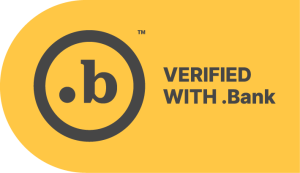As technology has changed every aspect of our daily lives, we have found ways to move traditional services, including banking, to a completely digital space. There has been a steady increase in mobile and online banking over the last decade.
According to an FDIC survey, in 2021, 43.5% of respondents who used a bank used mobile banking regularly. This was a sharp increase from the percentage in 2017 at only 15.1% of bank customers.
Once known as a cornerstone of their communities, traditional banks see that many customers are now more likely to interact on a screen rather than walk in off the street. In response, most banks have offered many digital banking services, like online banking and bill pay, for several decades. However, this shift in online banking usage has led many customers to consider if it is worth choosing an online-only bank over a brick-and-mortar location.
If you’re considering your options for your next financial institution, keep reading to learn more about online-only banks and if you should use one.
What Is an Online-only Bank?
An online-only bank, also called a direct bank, is a financial institution that offers similar services to a traditional bank without a brick-and-mortar location to visit. All services are rendered within the bank’s website or mobile application. Online-only banks offer the online banking features of traditional banks as the core way customers can access their financial services.
If you’re still curious about online-only banking, let’s look at some of this service model’s biggest pros and cons.
Pros of Online-only Banking
Pro: Enticing Entry Offers and Interest Rates
Many online-only banks offer enticing entry annual percentage yield rates for customers on checking and savings accounts. These higher rates are attributed to needing less overhead than a traditional bank.
However, it’s important to note that interest-bearing accounts aren’t exclusive to online-only banks. Many local financial institutions, like Community Point Bank, offer checking and savings accounts that can also help your money grow over time. Small local institutions are also known for having lower fees and higher interest rate yields than other institutions.
Pro: Optimized Online Banking Experience
Online-only banks are typically considered to have user-friendly digital experiences. Their focus on digital experience is critical, as it is the only way to interact with your accounts. Most brick-and-mortar banks also offer mobile banking experiences that can handle a range of tasks, including checking your balance, making transfers, mobile deposits and online bill pay.
Cons of Online-only Banking
Con: Limited Customer Service and Support
It’s important to carefully review online feedback from current customers of any financial institution you are considering. When searching for feedback on some of the largest online-only institutions, one of the biggest drawbacks customers report is the need for more customer support when dealing with problems with their accounts.
With no central branch to visit in person, many reported having difficulty resolving issues. One of the biggest strengths of a local brick-and-mortar bank is the ability to visit or call the bank to discuss and fix an issue with a staff member. Calling and discussing a problem with a customer service representative at a local bank is easy.
Con: Services May Be More Difficult to Obtain
In addition to resolving transaction issues, obtaining lines of credit or other services may be more difficult. You are more unlikely to build a rapport with any support staff at a large online-only bank.
When dealing with customers in mass, these financial institutions must quickly base your ability to borrow money or access other services on your credit score or additional limited information. Whenever you work with a local bank, you can work with someone who knows you and has more context for your situation.
Con: No Investment in the Community
It’s critical to note that online-only banks don’t reinvest funds into your community. Like other national banks, online-only banks will use funds to invest in large businesses and government funds. Local financial institutions are dedicated to making the surrounding area a better place to live and contribute to efforts closer to home.
Keep Your Options Flexible at Community Point Bank
Before you choose your next bank, it’s a great idea to use the FDIC’s BankFind tool to make sure they are FDIC-insured (find our certification here).
You can utilize convenient online banking features without giving up the ability to visit with a representative in person when you bank with Community Point Bank. We offer several excellent online services that are easy to use and can help you better manage your finances and stay on track for your financial goals.
Visit our contact page to learn more.




